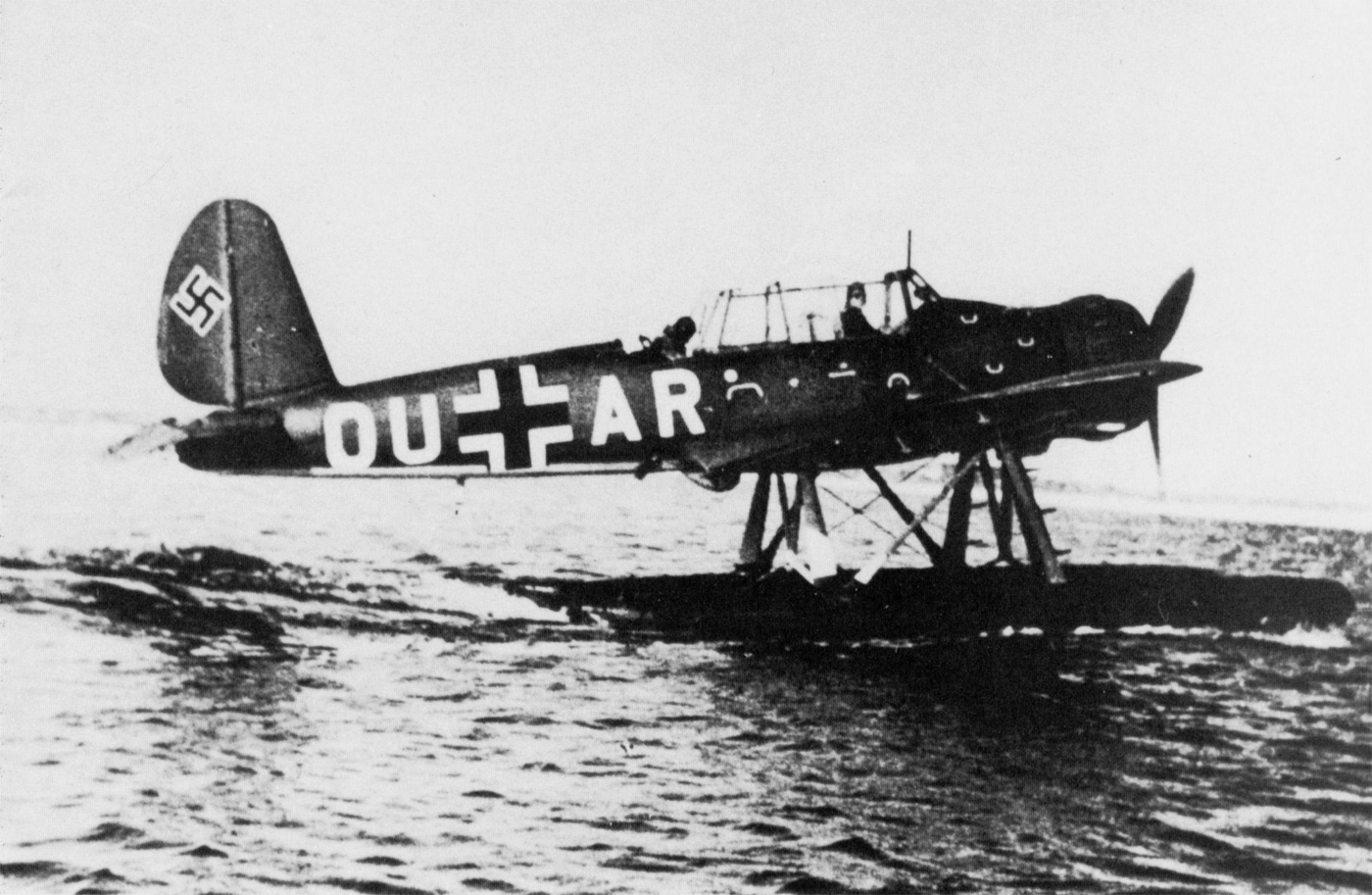The RAF discovered that, in the hands of a skilled pilot, the Ar 196 might prove to be an unexpectedly lethal adversary
The Arado Ar 196 may have been the best shipborne reconnaissance seaplane of World War II after winning a 1936 design competition organized by the Reich Air Ministry over rival biplanes. The Ar 196 was a catapult-launched floatplane that flew a variety of combat missions during World War II, including coastal patrol, submarine hunting, light bombing, general reconnaissance, and convoy escort sorties. It replaced the Heinkel He 60 biplane as the standard floatplane aboard the Kriegsmarine’s capital ships.
Spitfires were also brought down by the Ar 196 during the Battle of Britain.
As told by Peter de Jong in his book Arado Ar 196 Units in Combat, during the late afternoon of Aug. 15, 1940, Staffelkapitän Hauptmann Gerrit Wiegmink and his observer, Leutnant Zur See Dietrich Schlenker, were airborne over the Strait of Dover in Ar 196A 2 T3+DH, no doubt looking for one of 75 aircraft lost by the Luftwaffe that day when suddenly Schlenker spotted ten Spitfires approaching low over the sea, Wiegmink afterward reported;
‘At dashing speed, the ten Spitfires closed in, assuming a wedge formation and opening fire at 1000 m. Bullets from 80 machine guns were all around us as we made for the French coast at full throttle. Suddenly, I felt a violent beat on my right shoulder. Hit!’
They were actually attacked by six No. 266 Sqn Spitfire Is that had been scrambled from Manston in order to intercept a “He 115 seaplane” that had been spotted on radar 19 km (12 miles) off Deal. But on that day, the RAF discovered for the first time—as the article’s main photo illustrates—that the Ar 196 could be a shockingly lethal foe if flown by a skilled pilot, as Wiegmink undoubtedly was;
‘When the fighters were at about 600 m, I simply threw the aircraft around, and in a steep turn, I headed straight into the charging Engländer, firing at one and keeping it in my sight until it passed three meters over me trailing a long white smoke plume. It broke out of its formation and, rapidly losing altitude, disappeared towards the English coast. I don’t know if it made it.
‘The enemy fighters regrouped and again attacked my aeroplane from behind. I had to fly as low as possible to prevent an attack from below. There were four, five, maybe six attacks. Again I threw the Arado around, smack into the enemy formation. Again and again. My observer must have been killed during the third attack. Until then, he calmly returned fire and still found time to call the distance and position of those enemy aircraft for me as I could not see them myself. In doing so, he had enabled my first counterattacks.

‘The enemy fighters changed tactics. A few took position further back on both of my sides, so I would still have fighters in my neck if I turned towards them. It was hopeless. Already pieces of skin were tearing off the wings. The glass canopy shattered. My head shivered and my hand also jerked.
‘During the battle, I had been approaching two German R Boote, hoping that they would engage the pursuers. My Arado’s engine had also been hit and ran very irregularly. But finally, in an abrupt left turn, I caught a Spitfire in a right turn from below and shot my ammunition into this opponent. I saw a black smoke plume, and in a flash witnessed the Spitfire going down.
‘My brave Arado, which had kept me in a battle against a tenfold superior enemy for 15 minutes, now gave up. I crashed into the water almost simultaneously with the second Spitfire I had shot down. It all went so fast. I saw how my Arado alighted with one float down. I experienced the splashing of the impact, the roaring whirl of the spray, and, suddenly, a dark green veil that engulfed me. The Arado turned over, going underwater immediately but held up for a few seconds by the least shot-up float. This was enough time for me to free myself, and already almost unconsciously I must have crawled through the shot-up canopy. The float was still afloat, but when I wanted to cling to it, it sank.
‘Twenty minutes later I was picked up by one of the R Boote. A sailor dressed my shoulder wound and found that I also had a wound in the back of my head.’
Schlenker most likely passed away before the floatplane went down. Due to Wiegmink’s shooting down of Sgt. Frederick Hawley’s Spitfire I N3189 that day, another Spitfire was allegedly damaged, according to Wiegmink.
Arado Ar 196 Units in Combat is published by Osprey Publishing and is available to order here.
Photo by Mark Postlethwaite via Osprey and U.S. War Department

